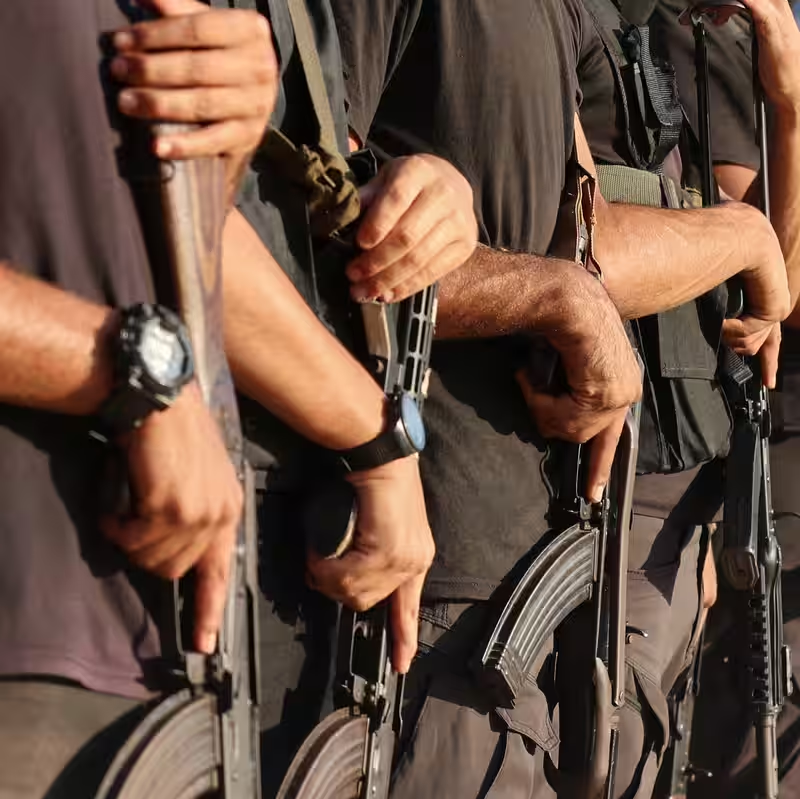Table of Contents
- Hamas Public Executions Shock Gaza
- Why Hamas Is Cracking Down Now
- The Doghmosh Family Feud
- Trump Administration’s Controversial Response
- What This Means for Gaza’s Future
- Sources
Hamas Public Executions Shock Gaza
In a chilling display of power just days after a ceasefire with Israel took hold, Hamas fighters publicly executed eight Palestinian rivals in the streets of Gaza City. The brutal killings, captured on video and verified by The New York Times, show masked gunmen in black uniforms forcing the men to bend over before opening fire in broad daylight—leaving their bodies in the dirt as onlookers watched.
Hamas confirmed the executions through an internal security source who spoke anonymously, stating the victims were linked to rival factions accused of collaborating with Israel during the two-year war.
Why Hamas Is Cracking Down Now
After suffering devastating losses—including the deaths of top commanders and thousands of fighters—Hamas is attempting to reassert its dominance in Gaza. With Israeli forces pulling back under the new truce, the militant group sees a critical window to restore order… on its own terms.
“Hamas is sending a message: ‘We are here. We are the sole authority in Gaza,’” said Tamer Qarmout, a Palestinian political analyst based in Qatar.
Armed patrols have reappeared in cities like Deir al-Balah, where Hamas fighters are now directing traffic and rounding up suspected “criminals” or “collaborators.” The group’s interior ministry has issued warnings to rival factions, offering amnesty to those who surrender—but threatening harsh consequences for resistance.
The Doghmosh Family Feud
The executed men included members of the Doghmosh family, a clan with a long-standing rivalry with Hamas. According to Nizar Doghmosh, a family leader, the violence erupted after Hamas attempted to arrest relatives it accused of aiding Israel.
A gun battle broke out on Sunday night in Gaza City, killing at least 24 people, including Naim Naim—the son of senior Hamas official Basem Naim. The next day, the public execution followed in the same neighborhood.
Witnesses described scenes of terror: armed men bursting into homes, checking ID cards, and ordering families to flee amid gunfire. “We spent hours huddled in the center of our home,” one resident recounted, speaking on condition of anonymity.
Trump Administration’s Controversial Response
President Trump’s reaction stunned observers. When asked about Hamas executing rivals, he said, “They’ve been open about it, and we gave them approval for a period of time.” He later added, “That didn’t bother me very much, to be honest,” framing the killings as targeting “very bad” gangs.
The U.S. military’s Central Command quickly walked back the remarks, issuing a statement urging Hamas to “stop shooting at Palestinian civilians” and confirming that U.S. concerns had been relayed through international mediators.
Analysts warn this tacit tolerance could backfire. During the war, Israel covertly armed anti-Hamas militias like the one led by Yasser Abu Shabab in Rafah. Now, those groups fear retaliation—and some vow to fight to the death.
“We won’t turn ourselves in. We would rather die.”
— Mohammad al-Mansi, 21, son of a northern Gaza militia leader
What This Means for Gaza’s Future
The internal violence threatens to unravel the fragile ceasefire and complicate postwar plans. President Trump’s vision for Gaza requires Hamas to disarm and cede control—an outcome the group has flatly rejected.
With rival militias refusing to surrender and Hamas flexing its muscles through fear, Gaza risks descending into a new phase of chaos. As one former Israeli intelligence officer put it: “We armed and supported these militias, and now Hamas is coming for its revenge.”
For now, the streets of Gaza tell a grim story: peace with Israel may have begun, but peace among Palestinians remains a distant hope.




